Dear Friends
As we sat on a massive driftwood fir log while dining on our light lunch of summer sausage and sheep cheese, Caryl and I watched the V-shaped ripple of disturbance in the quiet bay waters manifest a harbor seal. He cautiously raised his head above water, his eyes furtively scanning from one horizon to another as he gathered needed air for his mammalian lungs. And then, in an instant, he was gone.
I grabbed my Buck knife, which I had stuck in the wood of the massive fir trunk pushed clear of the pounding surf by a storm surge on the gravel beach. I cut another morsel of cured beef. The placid waters of this warm and sunny September day stood in stark contrast to the stormy winter day months ago of high seas and violent southwest winds that drove all manner of flotsam and jetsam from the vast waters of the Salish Sea and perched it high among the amalgam of volcanic and sandstone rocks that typified the 400 some islands of the San Juan Island archipelago that Caryl and I had been exploring.
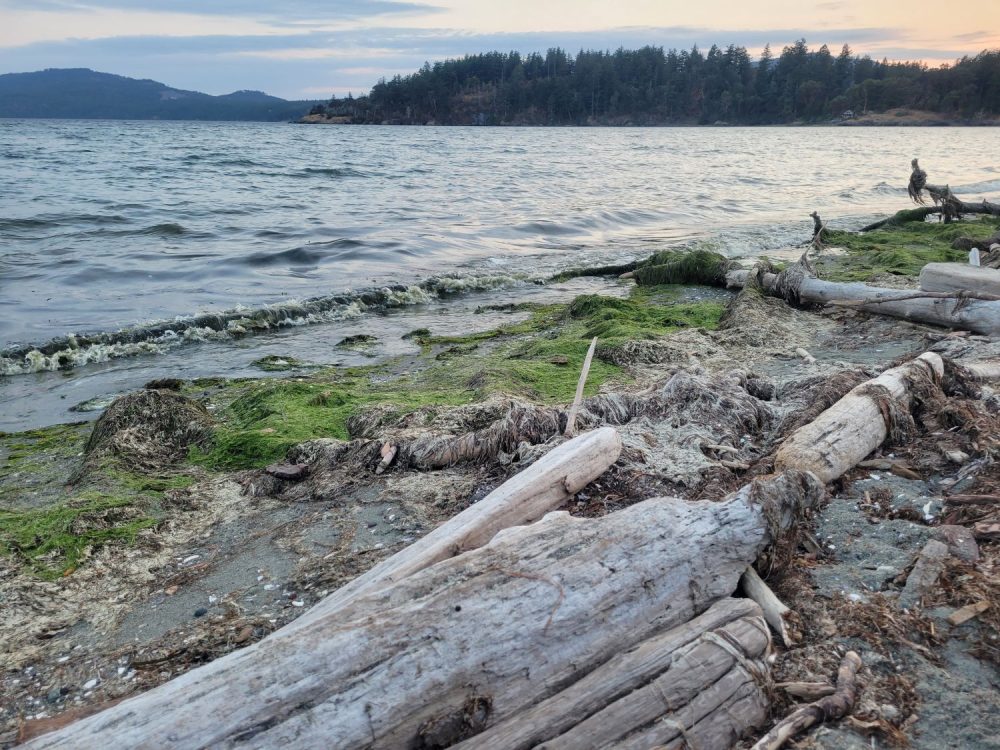
I had to be careful where my Buck knife stuck in the log, because there were rocks peppering and deeply driven into the grain of the massive trunk of the fir tree from the power of the storm surge. But today, things were amazingly calm, and Caryl and I had observed quite a few seals just like this one over the past few days, and most of them shared the same cautious sensitivity toward intruders to their domains.
We were northwest of Seattle, a 2 hour ferry trip into the outermost islands of the San Juan group, on a large island called Orcas, just south of the Canadian border. It was a much needed unplug from Alderspring Ranch that we had never been able to have until now. Our daughters (and one of their husbands), as well as some really great ranch hands, can now juggle and successfully manage all of the ‘spinning plates’ we had up until now (for over thirty years) managed on our own.
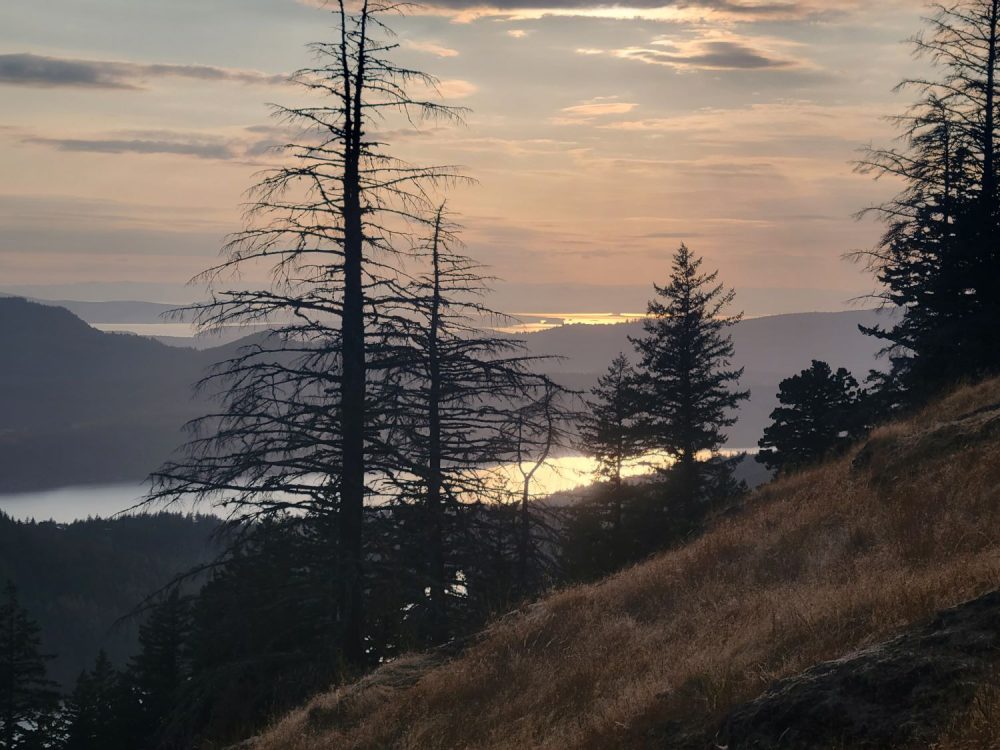
This was our first time off together on vacation, without kids, in a long time, over thirty years if our recollection is right.
The first few days were a little anxious. Some questions came up, from cattle grazing alfalfa dominated swards (a species requiring careful management to keep cattle well) to two head missing still in the high country. There were orders to ship out, and 600 head and over 40 horses to find and manage fall grazing for. Caryl and I worked email, text and phone a little to square things up, but then the girls and employees hit their stride.
It was going to be OK.
So we unplugged. Completely. We found a small cabin online that was off the communication grid, got out of our element, and headed for the islands. Literally. And for salt water. Little did we know that there is sort of an underground network of connectivity in nature, and that even here, nearly 900 miles from home, we would see potential impacts and effects from what we do on the land on just a small piece of the planet on an inconsequential piece of the Rocky Mountains in Idaho.
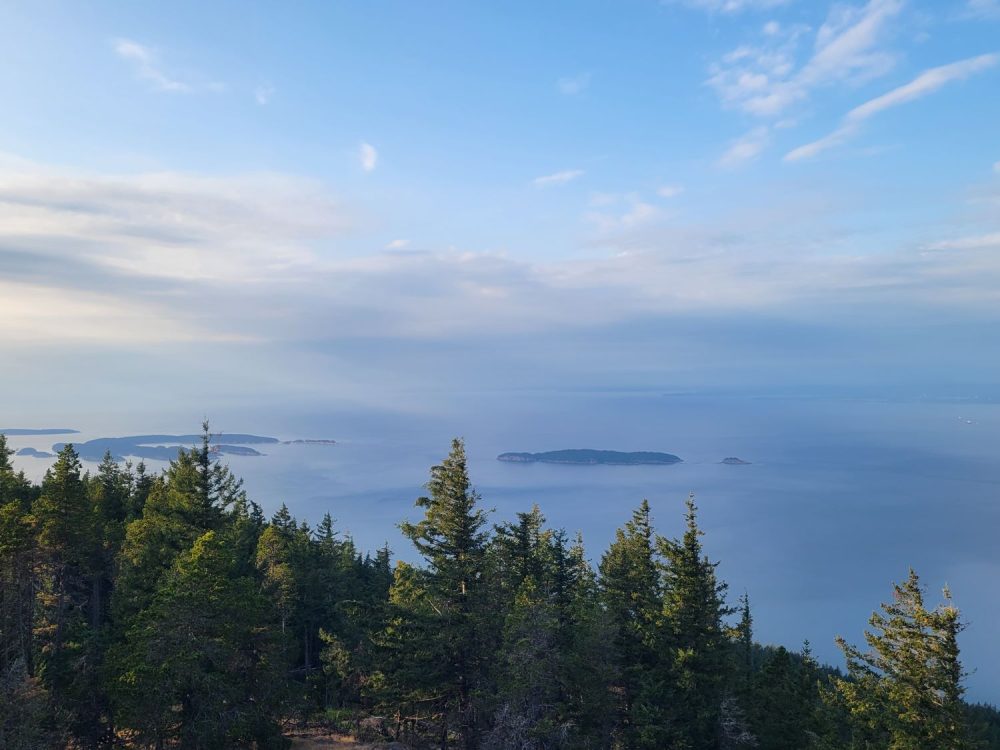
Rewind a few years with me, dear reader, to 2005. Caryl (pregnant with Maddy) and I loaded up in our Chevy Suburban in February to check out a new and much larger ranch in Idaho’s Pahsimeroi Valley. We knew we needed to make a move, because Alderspring had outgrown our first ranch in Tendoy, Idaho. Lease ground was one way we could have grown, but organic certification was very difficult with multiple landowners. A better solution would to be self-contained on our own place. So we left the 6 older kids with a friend and headed up to the austere mountain valley that paralleled our current valley, the Lemhi, in the part of Idaho termed ‘Basin and Range’ geography by geologists.
It was a cold and bitter day when I took her up to the new place. The previous owners had left it empty and fairly picked up, but clearly abandoned. The main house was froze up hard in the winter cold, and the floorboards creaked underfoot. The place was unlocked, and pretty near cold inside as it was outside on this brittle winter day.
It was clear that rodents had the run of the place. Their droppings were everywhere. A BB gun still leaned against the peeling paint of the wall in the sitting room where it was clear that the former owner had sat and shot mice from his living room chair.
Mildew and the smell of black mold permeated the place even in the cold winter air. Parts of the kitchen floor were rotted through. A lingering skunk smell hung in the stale and cold air. Bare bulbs hung from the ceiling and the single pane windows were cracked or drafty. Torn window screens waved in the brisk winter wind.
Caryl was silent as we toured the house. I saw her hold and gently rub her 8 month pregnant midsection as she looked out the window across the lonely valley. I knew she was considering the home she would be introducing our new daughter to the world in; there was little good about it. There were no close neighbors; our friend network was over an hour away. At our current ranch in the Lemhi, there were 4 helpful neighbors within just a half a mile. But in this big country place, you could see only a few homesteads. The rest was range, mountains and sage.
The mountains were abrupt and bleak-their rock and ice covered crests were streaming ice-fog and snow. There was no-one up there in the mountains, either; nor would there ever be. Chill wind shook the house with a low moan; the Pahsimeroi was cold and lonely.
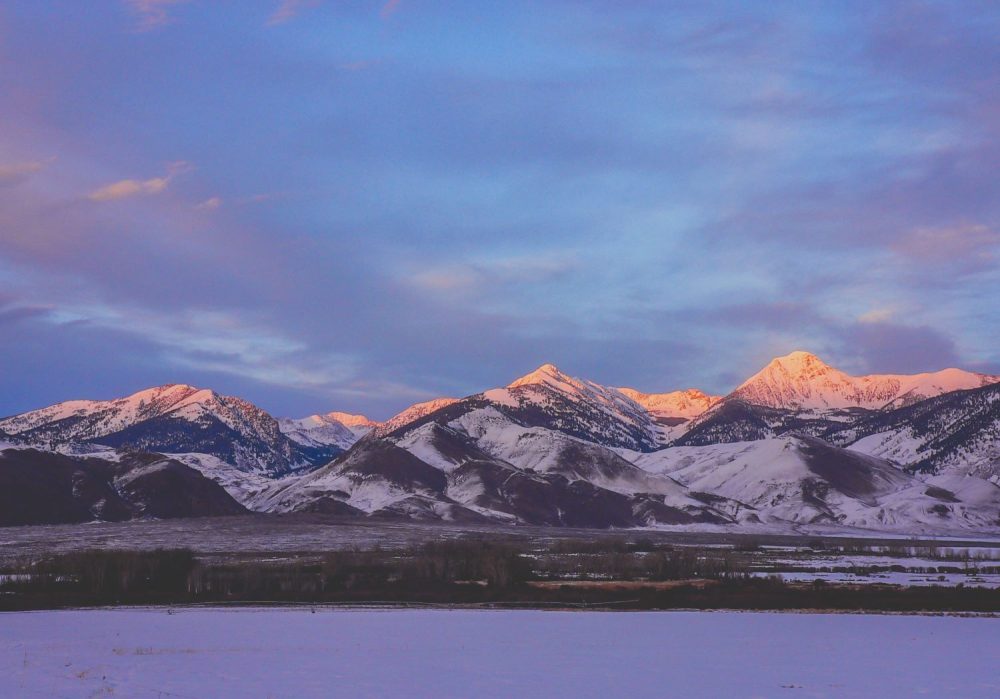
I looked over at Caryl while she looked out the window. Tears tracked her cold cheeks.
It was a hard move, but we had little chance at a ranching future otherwise. It was either quit or increase our herd to reach an economy of scale that could be profitable. In April, we loaded up furniture and household goods in a couple horse trailers, and ranch stuff on a couple flatbed trailers, and friends from the Lemhi Valley helped us move most of our stuff in one day to the big valley of the Pahsimeroi, about an hour and a half away. Caryl, with Maddy on her side instead of inside her, had risen to the occasion despite the incredible amount of work it would take to make the broken down farmhouse a home.
The inside work was only a small part of the work at hand. Outside, the work seemed insurmountable. There was so much to do to make the place operational, but it was more than that; one of the first things we thought of was to do no harm to the incredible habitat we had inherited with the purchase of the ranch. The ecological capital we had invested in with this purchase was astounding. For example, 40 percent of all the migrating Chinook salmon that returned to the Pahsimeroi River after negotiating the 900 miles up the Columbia River system spawned on the portion that flowed through the ranch. Up until the time we purchased the ranch, cattle had full access to all the spawning beds and banks along the river. Banks were exposed and ‘bleeding’: mud found easy access to the river, clouding the pristine waters as the rolling waters churned by.
It didn’t take long before we had electric fence bordering the entire Pahsimeroi portion that flowed through the ranch–about 3 miles of streambank–protected from cattle use. That meant that the returning 36 inch long Chinooks (also known as King salmon) could spawn without being disturbed by our cows–and that the banks would no longer yield mud into the fine gravels the Chinook needed to spawn in oxygen rich waters.
Buying the Pahsimeroi ranch involved long complicated work with a number of partners: the Nature Conservancy (who coordinated the whole deal), US Fish and Wildlife Service, National Marine Fisheries Administration, the Idaho Fish and Game and The Natural Resources Conservation Service. Together we developed a different system to take water from the Pahsimeroi to irrigate the ranch. No longer would we irrigate our lands with an open ditch. Instead, we would utilize a series of carefully screened pump stations to prevent any death to fish, and cause much of the upper river to have enough water that fish could spawn for miles above the ranch as well as on the ranch through water savings from more efficient use.
Long story short? More spawning Chinook salmon. In just a few years, biologists were finding successful spawning activity not only on the ranch, but for miles above it. Those electric fence protection zones became hard permanent fences.
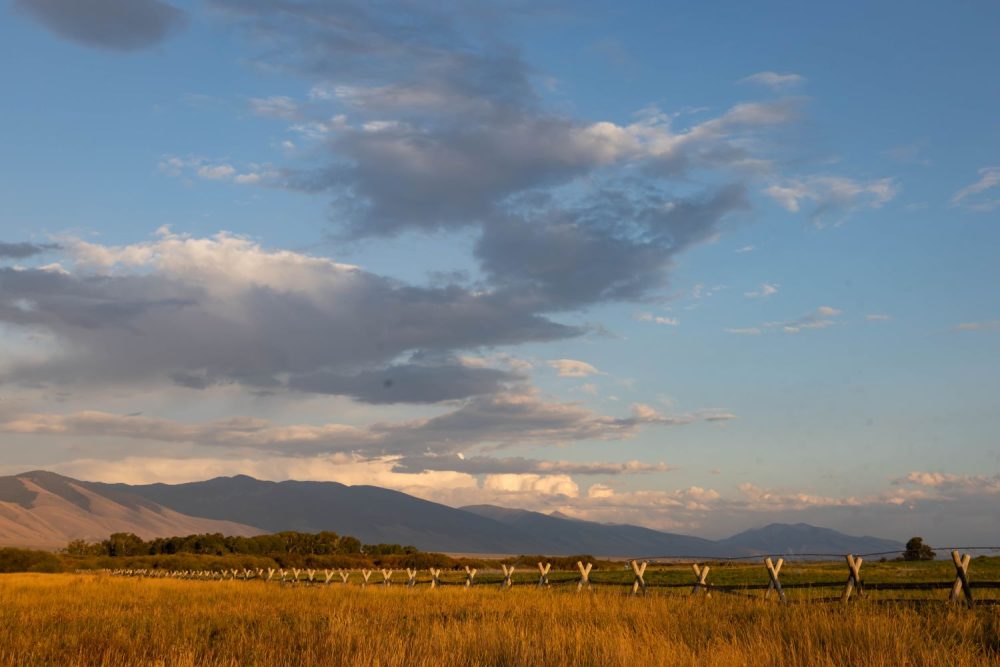
As a result, there’s more Chinook smolts (the small fingerlings that were hatchlings) heading downstream than there was before, simply because we got involved in fish conservation as ranchers. We weren’t the first, nor the last. But by working with ranchers along streams in upper watersheds, biologists could effectively increase the number of young fish headed back downstream toward the ocean.
Numbers mattered. Ocean going salmon and steelhead (sea-going rainbow trout) migration runs were in a steep decline.
The upper basin habitat work like what was done on our ranch was low hanging fruit in the effort to recover the salmon. The elephant in the living room was, and still is, the huge Northwest River system power generation dams. There are many that inhibit fish passage, both upstream and downstream in the Snake River and Columbia system, most of which were constructed in the 1970s. Before those years, salmon and steelhead were plentiful in the upper Salmon River watershed, which included the Pahsimeroi River that bisects Alderspring Ranch.
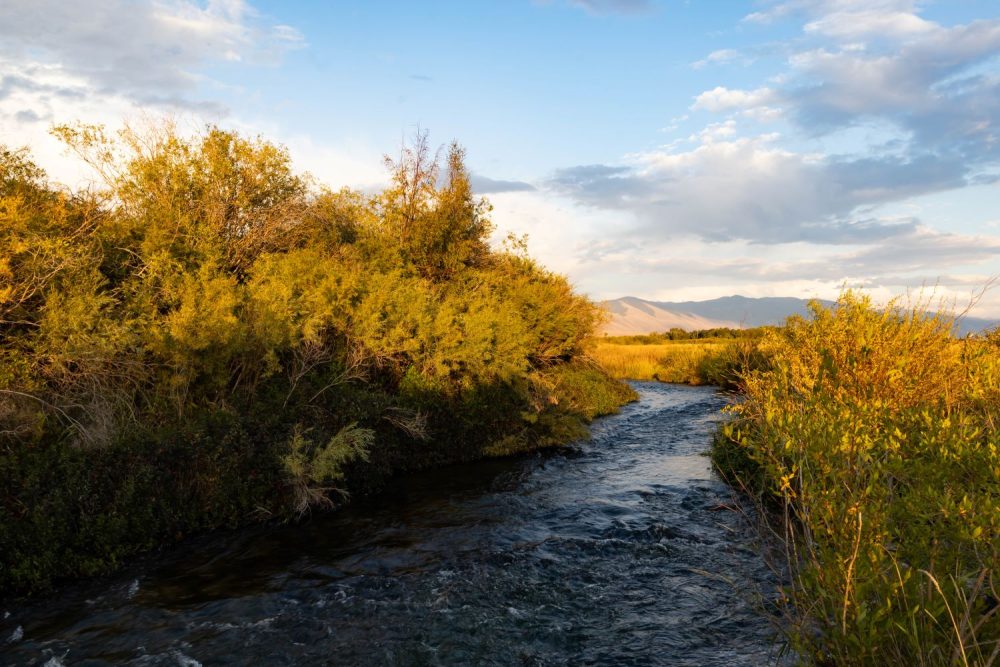
The fork-like ‘salmon spears’ with barbed tines at their ends resembling miniature pitchforks on long poles can still be found in many barns in sheds in the Upper Salmon River country. Old timers still recall when “you could walk on the backs of fish” in the small upper rivers when the Chinook ran thick all the way up until the time the last dams were constructed.
It was our hope, and the hope of many habitat regeneration pioneers in the upper watersheds, that our fish habitat efforts would offset the loss by the dams.
The wind blew wildly through Caryl’s auburn hair as we cruised at a brisk 35 knots across the wide and seemingly endless expanse of the Salish Sea north of Orcas Island. Views toward the distant horizons yielded faint views of Vancouver Island in Canada. We were on board the 40 foot Blackfish II, crewed by Captain Phil at the helm and deck handed by Kaylie. Both served as guides and experts in the sea and land fauna of the San Juan Islands, as well as the geology, history and vegetation. Caryl and I both stood near the helm where we could visit with both Phil and Kaylie as we skimmed across the light chop, swinging around floating logs, porpoises and groups of seabirds.
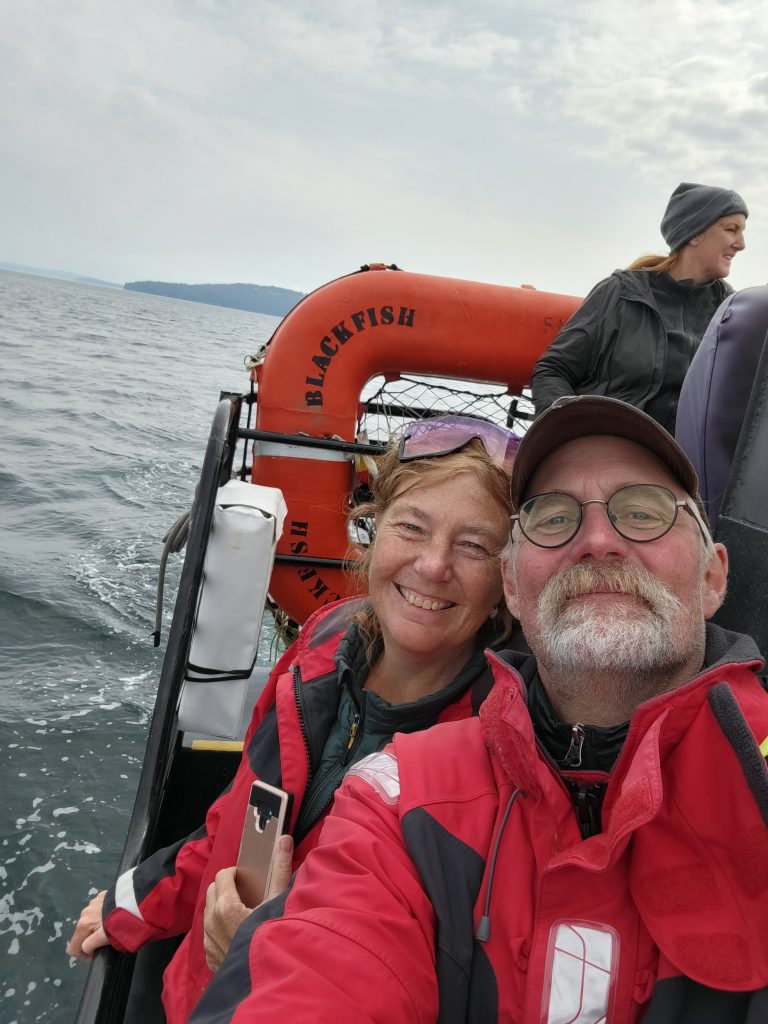
We were in search of the elusive Orca, a.k.a. the Killer Whale in their native habitats of the sounds, bays and seas formed by a Pacific Ocean that filled voids left by melting glaciers 12,000 years ago.
Phil and Kaylie explained that there were two ecotypes of Orcas in the San Juan Archipelago, comprised of nearly 450 islands. Phil described the residents: “There’s the southern population that is now down to 74 individuals. They travel between here and the mouth of the Columbia River between the Oregon and Washington border. They pretty much exclusively eat Chinook, or King salmon.”
Phil halted to listen to a radio transmission and checked his navigation plot on the Garmin display above his head. Kaylie continued: “Then there’s the ‘transient’ population of Orcas. They range from here all the way to the mid-coast of Alaska. The two ecotypes have distinct familial lines to them, so much that their communication dialects are very different from each other.”
Phil added, “The transient Orcas pretty much only eat mammals.”
“They don’t eat salmon?” I asked.
“No. They get most of their sustenance from seals, an occasional sea lion, or even have been known to attack larger whales in predatory groups. There’s even a record of them attacking and eating a blue whale.” Phil smiled at the irony of that: a 24 foot group of Orcas dining on an 80 foot blue.
I did too. Indeed, it painted a great picture.
After about an hour of high speed motoring south along the international border, Phil killed the twin throttles on the control panel. Kaylie was already on it, pointing like an Irish Setter. “There!” she called.
And they were right. Some 200 yards away, I saw a spout of water blow above the black chop against a conifer covered island backdrop. Then, as Caryl and I looked across the waters, 3 black fins broke the surface. “Orcas.” Caryl simply said. I looked over at her across the deck. She was perched on the highest stern deck, behind the bridge. She was smiling.
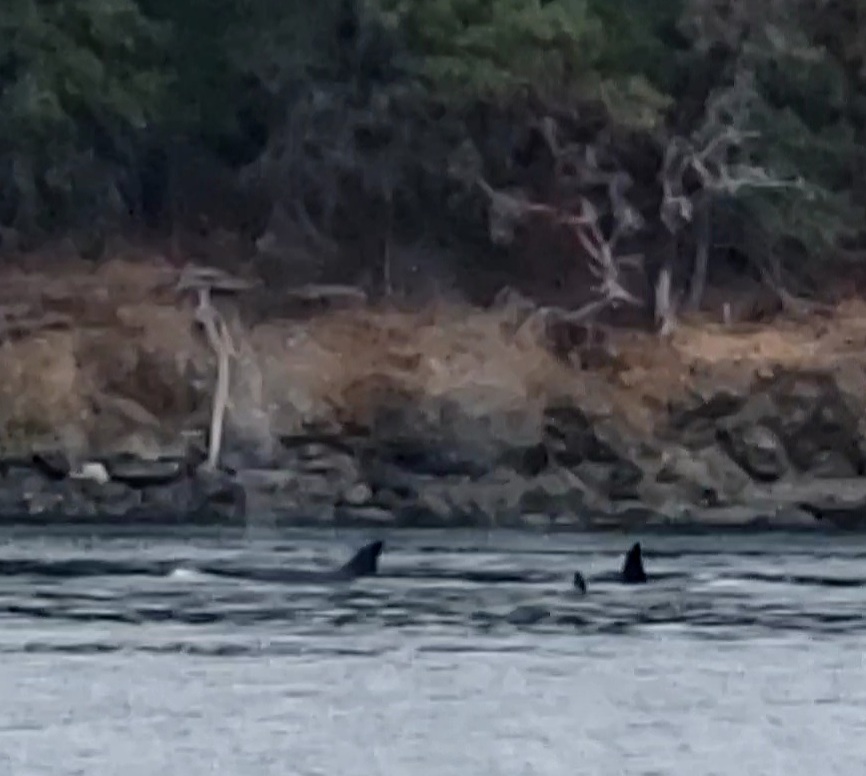
Over the next hours, we tracked the whales along shorelines of several islands. I asked Phil about distances. “There’s a lot of regulation about how close we’re allowed to approach them. We can’t get within 200 yards while going over 8 knots, otherwise, we could be ticketed, and ultimately lose our operating license.” It appeared that the Orcas were aware of our presence, but unperturbed. Soon another pod joined the ones we tracked–for a total of 7.
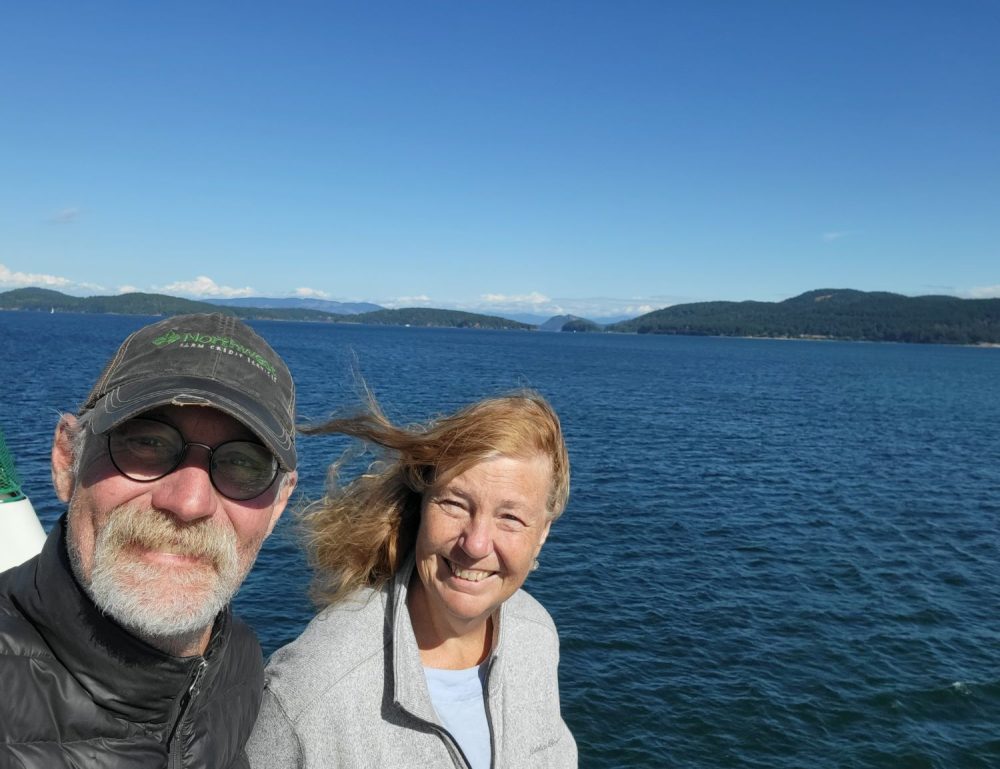
“These are all transients,” Kaylie mentioned. Kaylie and Phil actually recognized individuals by their fin markings, as well as the patterns of white on their bodies. “You can actually tell by their behavior on the shoreline. They are cruising the close edge, hoping to find a seal sunbathing. They’ll sometimes beach themselves on rocks to grab hold of an unsuspecting seal, but their bodies are so powerful they can wriggle back off the rocks.”
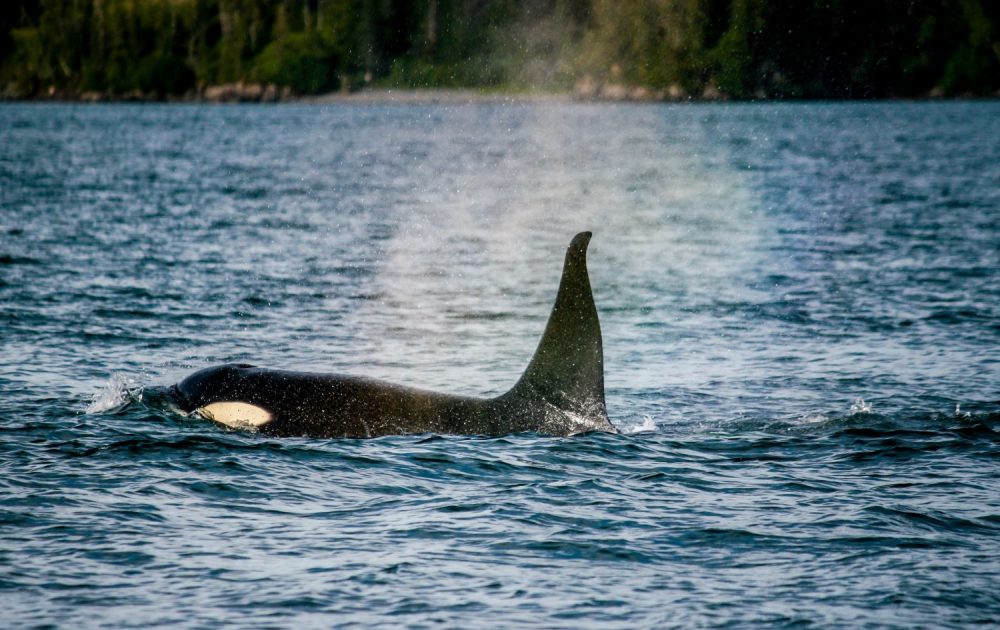
The mystery of seal caution Caryl and I observed the day before was explained. At any time, they could be an Orca snack with the new northern transients in these waters. There’s over 700 individuals in the transient ecotype, and they were drifting south in search of easy mammalian food. Seals were everywhere. Most bare rocks we could find had both seals and sea lions sunbathing on them.
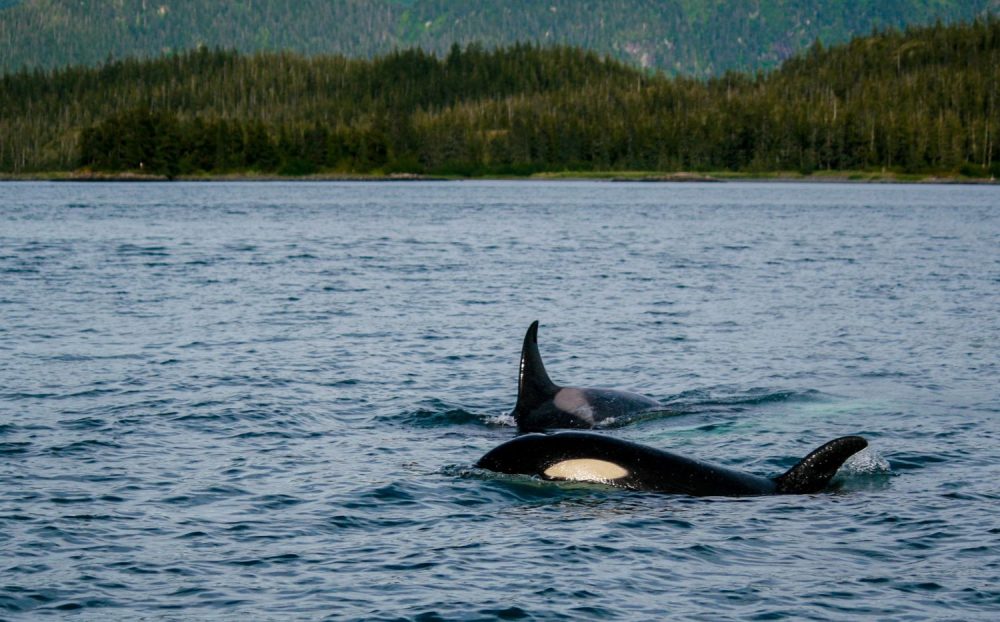
But the southern ecotype orcas are in decline: 74 individuals and decreasing. Why? Marine biology experts cite the fact that their preferred food supplies of salmon from the Columbia River and Fraser River (in Canada) have dwindled due to dam construction and habitat loss from logging and inappropriate grazing. Unlike their more wide-spread cousins, the southern ecotype exclusively eats salmon. Meanwhile, the northern transients fill their oceanic niche and with their more powerful jaws and heavier teeth exploit a diversity of food choices. In addition, the northern transients are larger and more aggressive, and it seems as though social pressures between the different ecotypes is real, orca “racial bias” if you will. The increasing prevalence of ‘transients’ creates pressure to the southern whales to move out of their previously dominant residence area.
The rain was unusual for August, but it was welcome. It was 3 years ago that I was down among the squiggly meanders of the Pahsimeroi that flow though the ranch. Here, clear waters flow over deep gravels in the intermittent willow shade. I searched pools with obscured bottoms as I peered down through the shadows to a depth of 10 or so feet.
The Chinook had arrived. They had made it through untold fish ladders over 900 torturous miles up the Columbia River system, navigating first by magnetic pole sensors in their heads and then by smell, each defining the exact place of their birth. To here. In this river. In these gravels, where they hatched nearly 3 years prior to this date.
As I crouched down in the cover of the thick willows and tall (always ungrazed now) grasses along the riverbank on the ranch, I watched a 38 inch ‘hen’ create a clean gravel depression where she would deposit her eggs. Two males hung nearby in the clear waters, waiting for her to deposit her roe for them to immediately fertilize before she would bury it all with her powerful tail.
Power was short-lived, however. Already, she had the signs of decaying flesh. She would be dead in just a few days. And the cycle of Salmon life would be complete. She made it past Orcas of the southern ecotype, and through the dams. She was a survivor, a last vestige of an intricately linked terrestrial, riverine and marine system that affected the life of southern orcas, transient orcas, and even harbor seals in the waters of the Salish.
Caryl and I don’t have answers when we stand witness to these things. In fact, we have more questions. The inter-connectedness of it all humbles us, and I can only say we are honored to be part of it. As we delve further into the complexity of life on Earth, we tread more carefully with each step we take forward.
And are learning to listen to nature more with every day.
Happy Trails to you all.
Glenn

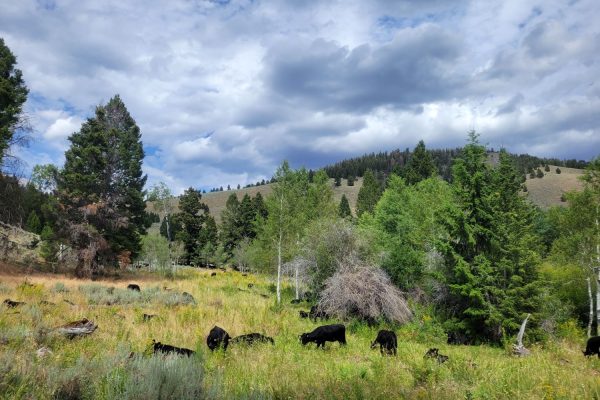

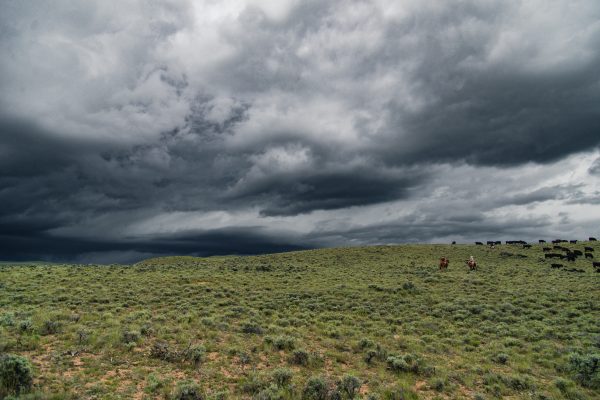

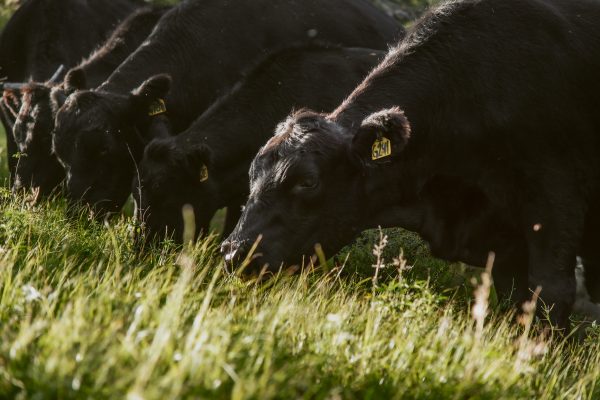
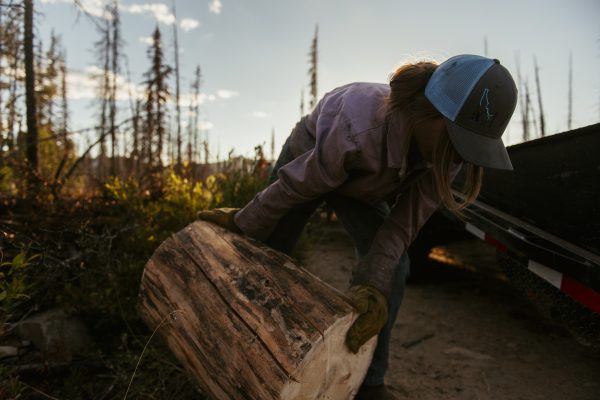
Harry R. Drackett, III (“Danâ€)
Great stuff. How do I order meat? Your “store†sends me to a website creator.
Caryl Elzinga
Harry!
We’ll get to work on the link! Just go to alderspring.com. You’ll see a store link! Thanks for your friendly nudge!
-Glenn
Cindy Salo
Great to see you guys off having fun!
Caryl Elzinga
Cindy, it was really cool. Can’t work all the time!
Glenn
Leslie Conner-maiyo
Glen that was a wonderful narrative that you posted on orcas and orca Island! Thank you so much for the wonderful insight. And congrats on a well deserved get away! What a treasure!
Caryl Elzinga
Leslie
Have you been there? It’s so accessible! Caryl and I were a little blown away about how easy it was–and fun. We had no idea. Call me if you head over there–many cool hikes and extraordinary things to check out. Purple starfish!
-Glenn
Mel
Wonderful story . Glad you got the vacation after 30 years ! I have been on Orcas Island and fished salmon along the Columbia in Washington so your story rang true and interesting for me , even though I live a long ways from there . However our youngest girl lives near the coast with her family . Really enjoy your Instagram posts
Glenn Elzinga
Hi Mel
I’m sorry I have been so slow to log in and answer comments. If you get this nearly a month late, just wanted to let you know I appreciate your comment! Caryl and I are already ready to head back to Orcas! – Glenn